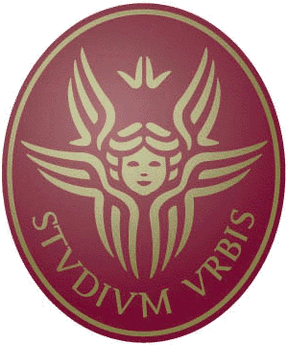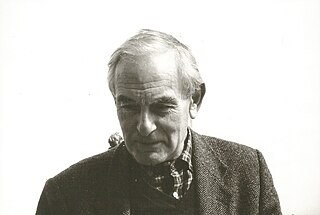Related Research Articles

Anzio is a town and comune on the coast of the Lazio region of Italy, about 51 kilometres (32 mi) south of Rome.

Nettuno is a town and comune of the Metropolitan City of Rome in the Lazio region of central Italy, 60 kilometres south of Rome. A resort city and agricultural center on the Tyrrhenian Sea, it has a population of approximately 50,000.

Antium was an ancient coastal town in Latium, south of Rome. An oppidum was founded by people of Latial culture, then it was the main stronghold of the Volsci people until it was conquered by the Romans.

The Forma Urbis Romae or Severan Marble Plan is a massive marble map of ancient Rome, created under the emperor Septimius Severus between 203 and 211 CE. Matteo Cadario gives specific years of 205–208, noting that the map was based on property records.

The Sapienza University of Rome, formally the Università degli Studi di Roma "La Sapienza", abbreviated simply as Sapienza, is a public research university located in Rome, Italy. It was founded in 1303 and is as such one of the world's oldest universities, and with 122.000 students, it is the largest university in Europe by enrollment. Due to its size, funding, and numerous laboratories and libraries, Sapienza is a major education and research centre in Southern Europe. The University is located mainly in the Città Universitaria, which covers 44 ha near the Tiburtina Station, with different campuses, libraries and laboratories in various locations in Rome.

Rodolfo Amedeo Lanciani was an Italian archaeologist, a pioneering student of ancient Roman topography. Among his many excavations was that of the House of the Vestals in the Roman Forum.

Cyclopean masonry is a type of stonework found in Mycenaean architecture, built with massive limestone boulders, roughly fitted together with minimal clearance between adjacent stones and with clay mortar or no use of mortar. The boulders typically seem unworked, but some may have been worked roughly with a hammer and the gaps between boulders filled in with smaller chunks of limestone.

The Via Valeria was an ancient Roman road of Italy, the continuation north-eastwards of the Via Tiburtina from Tibur. It probably owed its origin to Marcus Valerius Messalla, censor in 154 BC.

Andrea Carandini is an Italian professor of archaeology specialising in ancient Rome. Among his many excavations is the villa of Settefinestre.

Italo Gismondi was an Italian archaeologist. He is most famed for Il Plastico, a massive scale model of imperial Rome under Constantine the Great.
Ferdinando Castagnoli was a Roman topographer who taught at the University of Rome.

Lucos Cozza was an Italian Roman archaeologist.
Antonio Maria Colini was a Roman archaeologist who studied, among other topics, the Severan marble plan of Rome known as the Forma Urbis Romae. He was part of the group of scholars associated with Italo Gismondi.

Giovanni Battista (Carlo) de Rossi was an Italian archaeologist, famous even outside his field for rediscovering early Christian catacombs.

Italia suburbicaria was a vicariate of the late Roman Empire established by Constantine I (306-337).
Polygonal masonry is a technique of stone wall construction. True polygonal masonry is a technique wherein the visible surfaces of the stones are dressed with straight sides or joints, giving the block the appearance of a polygon.
Forma Italiae is a project whose aim it is to compile a complete archaeological map and gazetteer of Italy.
Elio Lo Cascio is an Italian historian and teacher of Roman history at the Sapienza University of Rome. Lo Cascio's main research interests are the institutional, administrative, social and economic history of Ancient Rome from the Republic to the Late Empire, and Roman population history.
The Lexicon Topographicum Urbis Romae (1993–2000) is a six-volume, multilingual reference work considered to be the major, modern work covering the topography of ancient Rome. The editor is Eva Margareta Steinby, and the publisher is Edizioni Quasar of Rome. It is considered the successor to Platner and Ashby's A Topographical Dictionary of Ancient Rome.
Eva Margareta Steinby FSA is a Finnish classical archaeologist. She was the director of the Finnish Institute in Rome from 1979–1982 and 1992–1994, and Professor of the Archaeology of the Roman Empire at the Institute of Archaeology, University of Oxford from 1994 to 2004. She is best known for her work on the architecture and topography of Rome, especially due to her contributions to the Lexicon Topographicum Urbis Romae (1993-2000).
References
- 1 2 "Lugli, Giuseppe nell'Enciclopedia Treccani".
- 1 2 3 "Archived copy" (PDF). Archived from the original (PDF) on 2014-08-11. Retrieved 2014-07-25.
{{cite web}}: CS1 maint: archived copy as title (link) - ↑ Giuseppe Lugli; Università degli studi di Roma "La Sapienza". Istituto di topografia antica (1950). Fontes ad topographiam veteris urbis Romae pertinentes, collectae, collatae, aditae curante Josepho Lugli: Pomerium (Specimen). Tip. Bardi.
- ↑ Giuseppe Lugli (1957). La Tecnica Edilizia Romana Con Particolare Riguardo a Roma E Lazio: Testo. 1. Johnson Reprint.
- ↑ http://antichita.let.uniroma1.it/ricerca/v_forita.htm.Forma%5B%5D Italiae